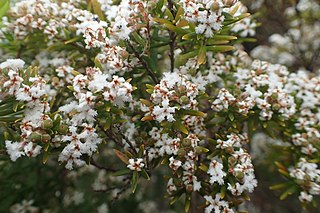
Leucopogon rubricaulis is a species of flowering plant in the heath family Ericaceae and is endemic to the south of Western Australia. It is an erect, open shrub with narrowly egg-shaped or narrowly elliptic leaves and white, tube-shaped flowers arranged on the ends of branches and in upper leaf axils in groups of four to thirteen.

Leucopogon plumuliflorus is a species of flowering plant in the heath family Ericaceae and is endemic to the south-west of Western Australia. It is a weakly erect shrub with egg-shaped leaves and spikes of white or pinkish-white, tube-shaped flowers.

Leucopogon pendulus is a species of flowering plant in the heath family Ericaceae and is endemic to the south-west of Western Australia. It is an erect, straggling shrub with oblong leaves and white, tube-shaped flowers that are bearded inside.

Leucopogon tamminensis is a species of flowering plant in the heath family Ericaceae and is endemic to the southwest of Western Australia. It is a slender shrub with many branches, overlapping triangular to egg-shaped leaves and white, tube-shaped flower arranged singly in upper leaf axils.
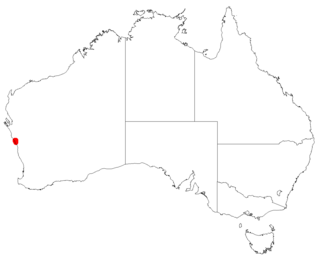
Leucopogon borealis is a species of flowering plant in the heath family Ericaceae and is endemic to a restricted area of the west of Western Australia. It is an erect shrub with hairy young branchlets, linear leaves and white flowers in nine to twenty upper leaf axils.

Leucopogon cochlearifolius is a species of flowering plant in the heath family Ericaceae and is endemic to the south-west of Western Australia. It is a bushy shrublet with many branchlets, triangular to spoon-shaped leaves, and white flowers arranged in clusters on short side-shoots.
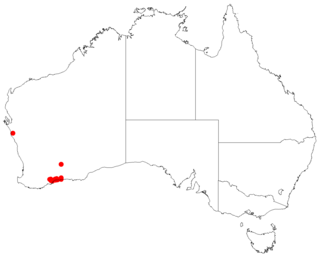
Leucopogon conchifolius is a species of flowering plant in the heath family Ericaceae and is endemic to the south-west of Western Australia. It is an erect shrublet with many branches, more or less round leaves near the ends of branchlets, and white, tube-shaped flowers arranged near the ends of leafy twigs.
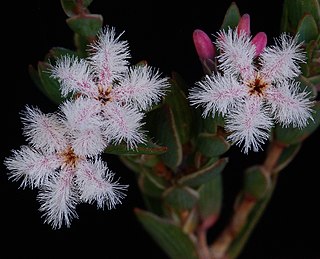
Leucopogon elegans is a species of flowering plant in the heath family Ericaceae and is endemic to the south-west of Western Australia. It is a spreading shrub with egg-shaped leaves, and white or pink, tube-shaped flowers densely bearded on the inside.

Leucopogon gilbertii is a species of flowering plant in the heath family Ericaceae and is endemic to the south-west of Western Australia. It is a slender shrub with linear to lance-shaped leaves and spikes of tube-shaped white flowers on the ends of branches and in leaf axils.

Leucopogon inflexus is a species of flowering plant in the heath family Ericaceae and is endemic to the south-west of Western Australia. It is an erect, open shrub with more or less glabrous young branchlets, spirally arranged, erect, egg-shaped to more or less round leaves, and white, bell-shaped, densely bearded flowers.
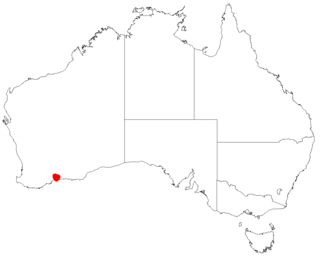
Leucopogon infuscatus is a species of flowering plant in the heath family Ericaceae and is endemic to the south-west of Western Australia. It is a shrublet with many branches, egg-shaped to lance-shaped leaves, and light brown, densely bearded flowers.
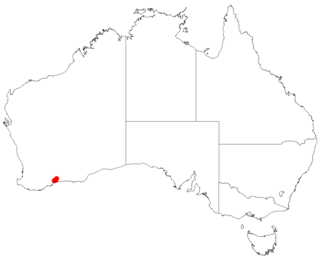
Leucopogon lloydiorum is a species of flowering plant in the heath family Ericaceae and is endemic to the south-west of Western Australia. It is a slender shrub with elliptic leaves clustered near the ends of branchlets, and white, densely-bearded, tube-shaped flowers.
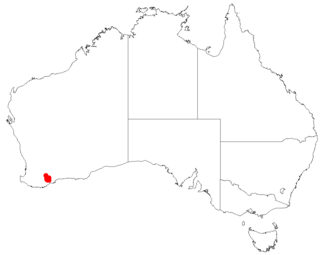
Leucopogon newbeyi is a species of flowering plant in the heath family Ericaceae and is endemic to a small area in the southwest of Western Australia. It is an erect shrub with densely hairy young branchlets, linear to narrowly elliptic or narrowly egg-shaped leaves and erect, compact clusters of 7 to 17 white, bell-shaped flowers mainly on the ends of branches.
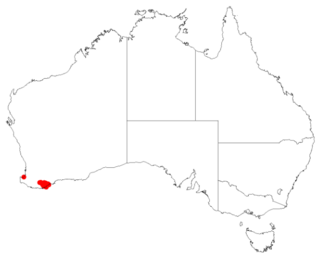
Leucopogon penicillatus is a species of flowering plant in the heath family Ericaceae and is endemic to the south-west of Western Australia. It is an slender, erect, spreading shrub with egg-shaped to narrowly triangular leaves and white, bell-shaped, bearded flowers arranged in groups of between 3 and 13.

Leucopogon prolatus is a species of flowering plant in the heath family Ericaceae and is endemic to the south-west of Western Australia. It is an erect, open shrub with a single stem at ground level, egg-shaped to elliptic leaves and erect clusters of 3 to 14 white flowers on the ends of branches and short side-branches.
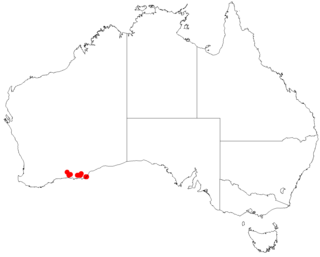
Leucopogon remotus is a species of flowering plant in the heath family Ericaceae and is endemic to the south-west of Western Australia. It is an erect shrub with a single stem at ground level, narrowly egg-shaped to egg-shaped leaves and erect clusters of 4 to 11 white, tube-shaped flowers usually on the ends of branches.
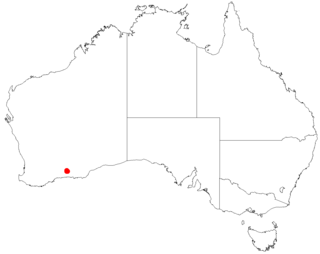
Leucopogon rugulosus is a species of flowering plant in the heath family Ericaceae and is endemic to a restricted part of the south-west of Western Australia. It is an erect shrub with a single stem at ground level, elliptic or egg-shaped leaves with the narrower end towards the base, and erect clusters of three to nine white, tube-shaped flowers.

Leucopogon stenophyllus is a species of flowering plant in the heath family Ericaceae and is endemic to the south-west of Western Australia. It is an erect, open shrub with a single stem at ground level, linear, narrowly egg-shaped or narrowly elliptic leaves and erect clusters of 3 to 17 white flowers on the ends of branches and short side-branches.
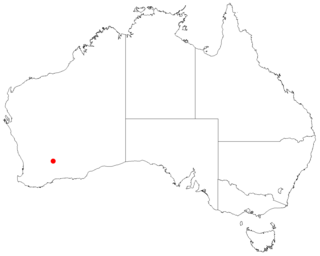
Leucopogon validus is a species of flowering plant in the heath family Ericaceae and is endemic to a restricted part of the south-west of Western Australia. It is a robust shrub with glabrous branchlets, narrowly elliptic leaves and white, bell-shaped flowers arranged in six to twelve upper leaf axils and on the ends of branches.
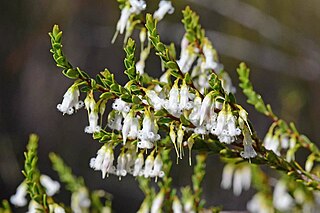
Leucopogon woodsii, commonly known as nodding beard-heath, is a species of flowering plant in the heath family Ericaceae and is endemic to southern continental Australia. It is a slender shrub with more or less erect, egg-shaped leaves, and pendent white, tube-shaped flowers with densely bearded lobes.




















